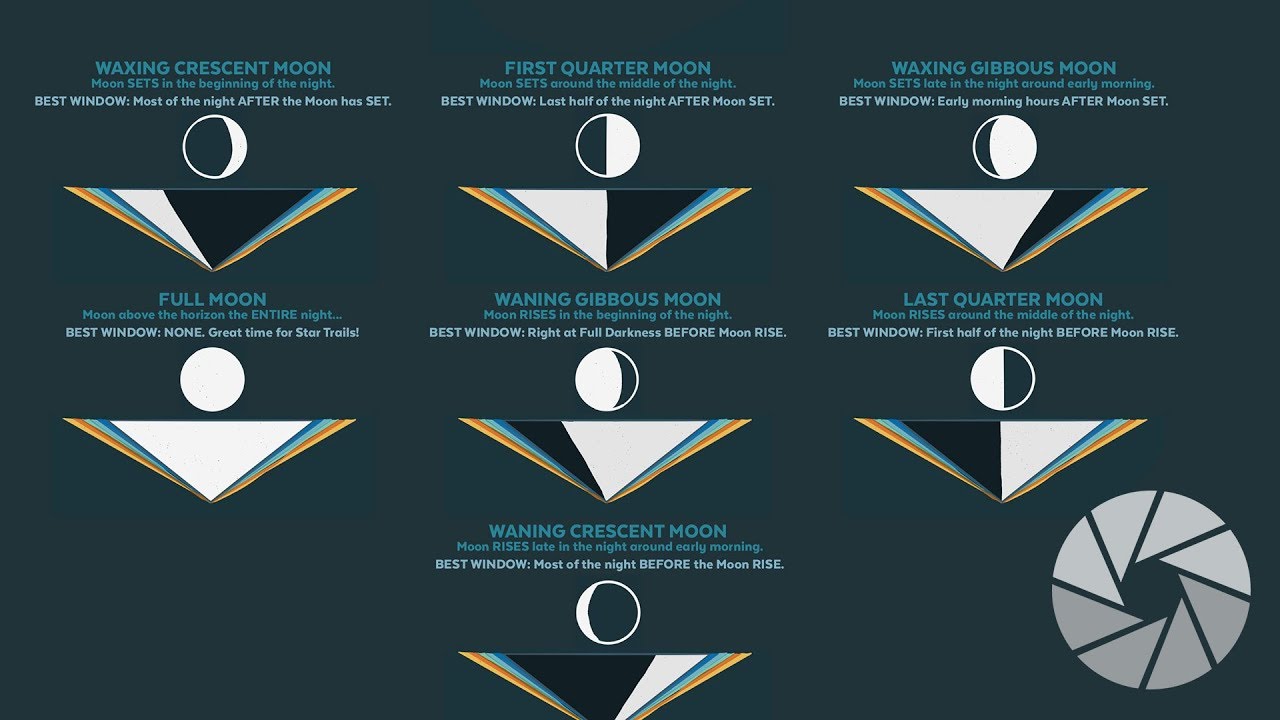With this nifty photography cheat sheet, you won’t need to wait for a moonless night to shoot Milky Way photos.
Anyone into astrophotography knows that the best time to shoot the Milky Way is during moonless nights with clear skies. But it’s also possible to shoot during whatever time of the month — you just need to know how to work with the Moon’s phases! With this brilliant photography cheat sheet and tutorial, you’ll learn a simple trick to know the best time of the night to shoot by just looking at the phases.
The Moon gets in the way of shooting those cool Milky Way photos. That’s a given. But with the “Moon Window of Opportunity” cheat sheet by Aaron King of Photog Adventures, you don’t have to wait until the next moonless night to shoot. You’ll be able to instantly tell the time of the night to get out there for some Milky Way photography.
As Aaron demonstrated above, the “Moon Window of Opportunity” has two versions: one for the Northern Hemisphere, and another for the Southern Hemisphere. In the Northern Hemisphere version, you have to keep in mind that the lit side of the Moon indicates the “opposite” time of night that it stays up and thus is unavailable to you. For example, based on the diagram, if the bright side is on the right (Waxing Crescent Moon), the time that the Moon is up is on the left of the chart, meaning the first half of the night. So your window of opportunity happens once the Moon has set after the first few hours of the night. This means that after the New Moon, you will need to shoot from late in the evening until the early morning hours. When the First Quarter Moon is up, you better sleep early and set your alarm because you have from midnight until the wee hours of the morning to shoot.
During the Full Moon, of course, you can’t shoot. But afterward, from the Waning Gibbous Moon onwards, you can shoot beginning in the early evening. You can stay out until midnight if the Last Quarter Moon is up. If you want to shoot until the very early morning, you can if it’s the Waning Crescent Moon. After that is the New Moon, so you can shoot all night.
The Southern Hemisphere version is way easier. The phase of the Moon simply indicates how long it will stay up. With the Waxing Crescent Moon, it’s just the flipped version of the Northern Hemisphere’s, so the left part of the Moon is lit. This means the beginning of the night is unavailable to you, and you have to wait until the Moon sets later in the night to shoot. If it’s the First Quarter Moon, you’d have to wait until it sets until around midnight to shoot. And so on. Easy peasy.
Whichever part of the world you’re in, this handy cheat sheet will let you plan your shoot ahead. You can even look at your calendar for the phases of the Moon and pencil in your preferred days for shooting those gorgeous Milky Way photos!
Aaron has a download link for this cheat sheet here, so you can save it for future reference. Check out and subscribe to the Photog Adventures channel as well for more of his landscape and astrophotography videos.


